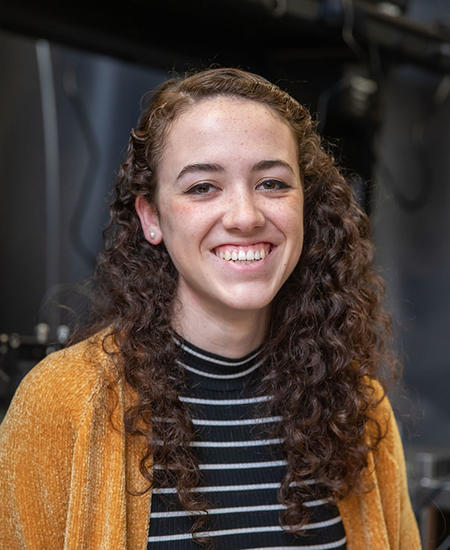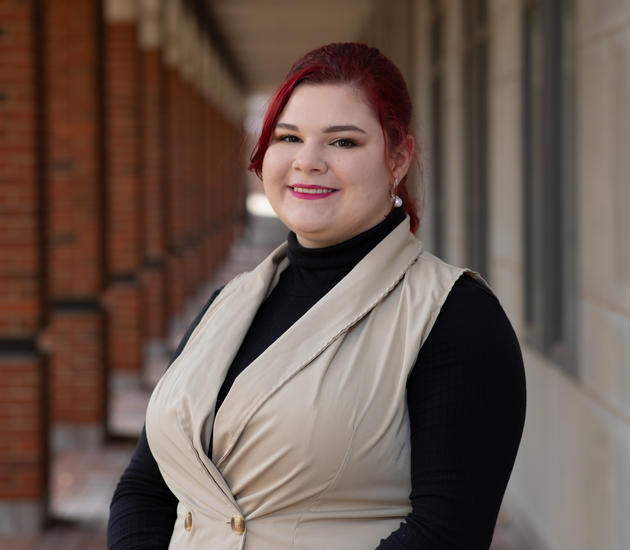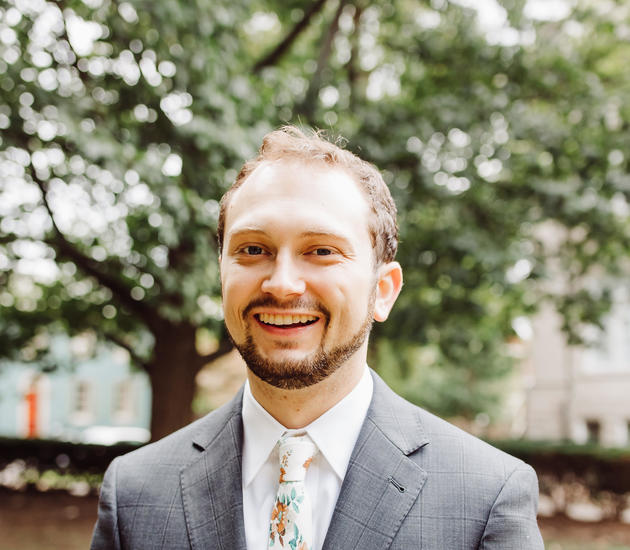By Kel Hahn
A junior from Nicholasville, Kentucky majoring in mechanical engineering, Kaitlyn Kearns didn’t come to the University of Kentucky with a plan to do undergraduate research. As with most good things in life, she discovered it through a friend.
“One of my roommates I've known since my freshman year started doing research, and I thought what she was doing sounded really cool. I heard that there was a mechanical engineering department research fair and decided to go. While I was there, I talked with Dr. Grady.”
An assistant professor of mechanical engineering, Martha “Meg” Grady studies thin film adhesion with biofilm-forming bacteria. Adhesion occurs when two things are stuck together, such as when bacteria coalesce into what is called a biofilm on a surface. Because there is currently no widely accepted method to accurately measure biofilm adhesion strength, Grady’s research is aimed at figuring out the strength needed to remove biofilms, measuring those forces required, and understanding the factors that influence adhesion strength.
“I've always enjoyed biology and her research combines mechanical engineering and biology,” says Kaitlyn. “I'm learning how to independently culture cells, and test the adhesion rate of bacterial biofilms.”
Recently Kaitlyn received notification that she won an award in the Oswald Research & Creativity Competition which promotes creativity in all fields of study. She had submitted an edited version of a report she wrote for the Grady Lab.
“I really like the writing aspect of research. This semester we’re finishing a publication, and because I contributed to data collection and created some of the figures, I will be listed as one of the authors.”
Kaitlyn’s current research project is supported by pilot funding from the College of Dentistry—studying biofilms that cling to dental implants.
“The titanium part that is screwed into the gum can become infected with bacterial biofilms that cause strep, cavities, or gum disease. If the biofilms grow underneath the surface, there's no way to get rid of them except by removing and replacing the implant. That’s not good for the patient, because the bone and gum have already adapted to the implant. Our end goal is to model the mechanical characteristics of bacterial biofilms on titanium, allowing us to improve the implant material so that bacterial adhesion will be prevented while cell integration is still possible.”
Currently in her third semester working in the Grady Lab, Kaitlyn was able to arrange her schedule so she can be immersed in research from 9 a.m. until noon every weekday and attend classes in the afternoons.
“Kaitlyn’s skills and work ethic are impressive,” says Grady. “After about a year in my lab, she is taking on responsibilities commensurate with first year graduate students. I am thrilled she plans to pursue doctoral studies after she finishes here and I am so very proud to be a part of her story.”
However, Kaitlyn’s interests extend beyond the lab. Numerous times each fall, she trades her lab coat and equipment for a marching band uniform and a trumpet.
“I actually started playing in my high school’s marching band when I was in eighth grade, and I joined UK’s marching band as a freshman. I’ve gotten to go to all three bowl games, and especially enjoyed the two played in Florida.”
Kaitlyn also served as a peer mentor in the Engineering Living Learning Program last year, something she considers to have been an important part of her engineering experience.
“I feel like the students under my mentorship became one of the more close-knit groups, and I was proud to see that a lot of them went on to be peer mentors themselves.”
Such a positive experience must be encouraging for Kaitlyn given what she wants to do for a career.
“I want to earn a Ph.D. and become a professor. I've always liked the mentoring aspect and learning new ways to teach and help those who don’t learn as well with typical methods of teaching. And as a professor I can also do research.”
Having grown up in nearby Nicholasville, Kaitlyn hopes to teach somewhere in Kentucky, possibly even at UK, once she completes her doctoral and postdoctoral studies. She says her professors have served as excellent role models, especially 2018 Outstanding Teaching Faculty Award winner Christine Goble.
“Dr. Goble is one of the best professors in the whole university. She makes you feel like you're in a small class even when you’re in a large lecture hall.”
Between her experience in the Grady Lab and Christine Goble’s example, chances are good that we’re only a decade away from undergraduate and graduate students excited about conducting research with a dynamic young professor named Kaitlyn Kearns.




